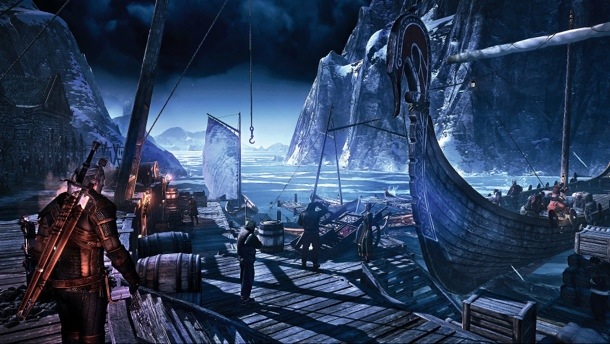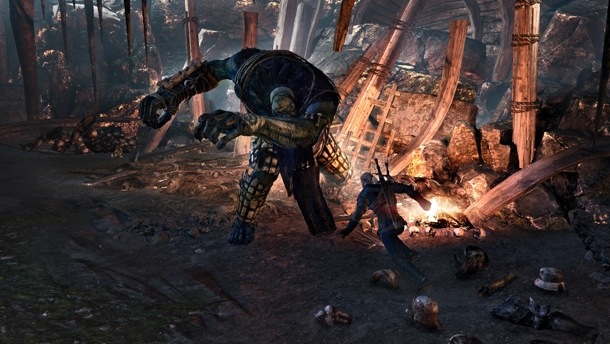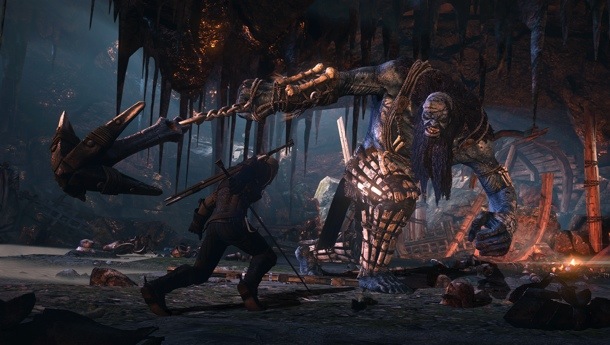The Witcher 3, it’s plain to see, will make you be, very happy.
Its world is large, you can sail a barge, between islands, and your horse through the highlands. That’s because (it’s all the buzz), the world is open, like fans were hopin’. It’s over 30 times bigger, than Witcher 2‘s figure.
Quests emerge, so our hero can merge, his shining sword, into fairy lords, and spooky ghosts, and massive hosts, for what profits most. A decision here, a decision there, you’re sure to hear, impact everywhere, in the open air, of the world out there.
The graphics don’t bore, but it would’ve been a chore, to make them look better than before. The Witcher 2 was very fair, and Witcher 3 is right about there.
What’s not so hot is the combat lot. It looked a bit wrought in the pre-alpha shot. Our hero would swing, our hero would miss, auto-targeting, was slightly amiss. Magic burned better, like love’s warmest letter, Geralt’s fire was unfettered.
The Witcher 3: The Wild Hunt’s jump to an open world setting, set across seven unique islands, is absolutely the correct direction for the series. The poetry of interweaving quests, dynamic events, decisions, and consequences looks much more at home in the open air than in previous games’ chapter-based structure.
During the demo, Geralt was tasked with tracking down and killing a malign forest spirit. Over the course of the side quest, he was forced to decide if the creature should live or die, and whether or not to reveal that the monster’s death required the sacrifice of an innocent. All of this is done in the name of profit for those in the Witcher profession, and the consequences of his actions were far from even, or expected.
The primary vehicle for those decisions is a plot revolving around the Wild Hunt, a horde of spectral warriors from previous games which lays waste wherever they go. They’re the granddaddy of monstrous monsters, and as a slayer of such, Geralt the Witcher is on their trail. Fans of the previous games will, of course, know this bounty is quite personal.
The personal nature of the story is something CD Projekt Red really wants to drive home, stressing that anyone who’s just entering the franchise now will be able to jump in immediately. As someone who played the previous games, and even read some of the books on which the franchise spawned, I have my doubts. The lore is thick and full of choices.
If you’re less concerned about reading bestiary entries, and fictional political histories, I’m sad to report that combat seems a bit wobbly at this stage. Unfortunately, Geralt is still prone to lashing his swords about at random, unsure of where to strike, thanks to weighty animations. That was an issue in the last game too, and considering how much The Witcher 3 resembles its predecessor — both graphically and mechanically — it doesn’t seem like core play has seen a stark overhaul. You’ll still rely heavily on magic, traps, potions, and items to offset the wild sword swings.
That being said, the series’ hallmark of morally ambiguous political/philosophical/religious/romantic action and reaction, spiderwebbing across events and stories all over the world, looked even more interesting than the newly robust environments. That is what keeps my interest in the Witcher games, not to mention what put The Witcher 2: Assassins of Kings at the top of my Game of the Year 2011 picks. Thankfully, the rhythm of those choices appears in full force here, and more complex then ever.
This is the way the Witcher ends, not with a string, but a tapestry.





No Comments